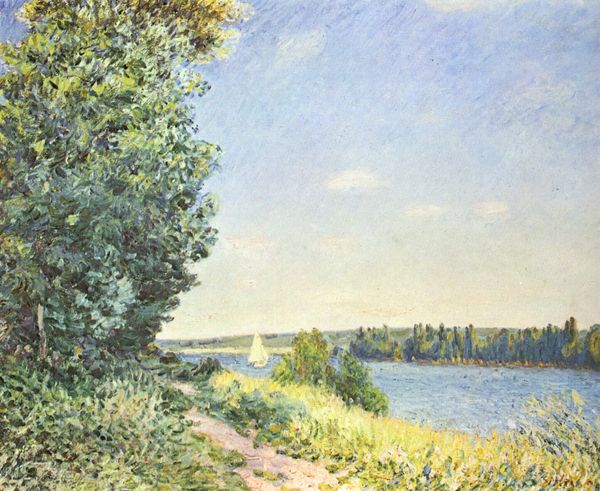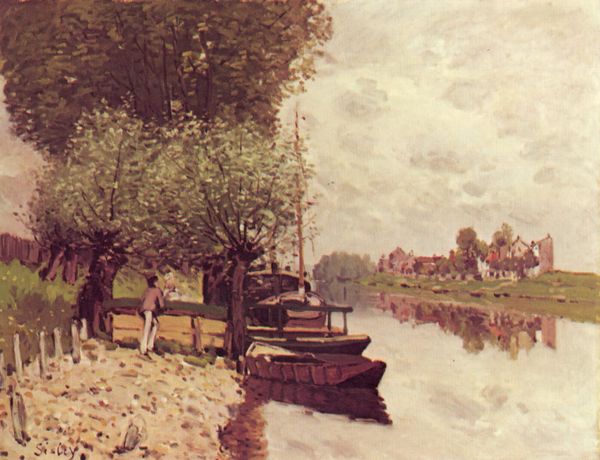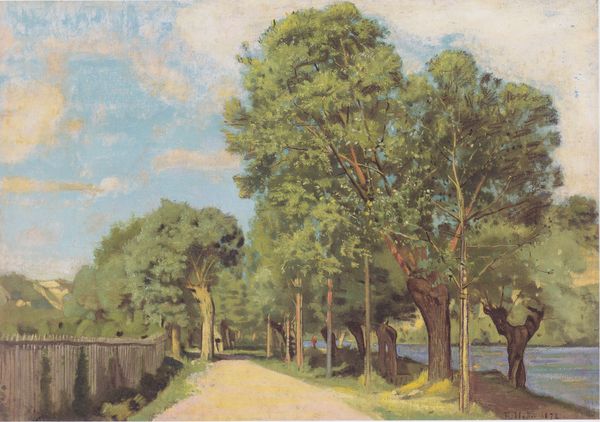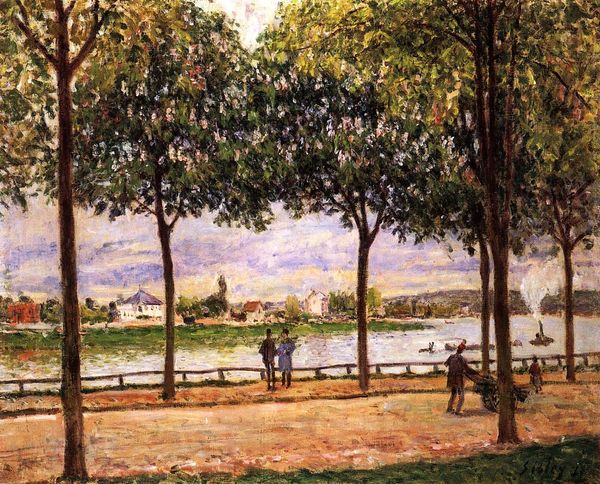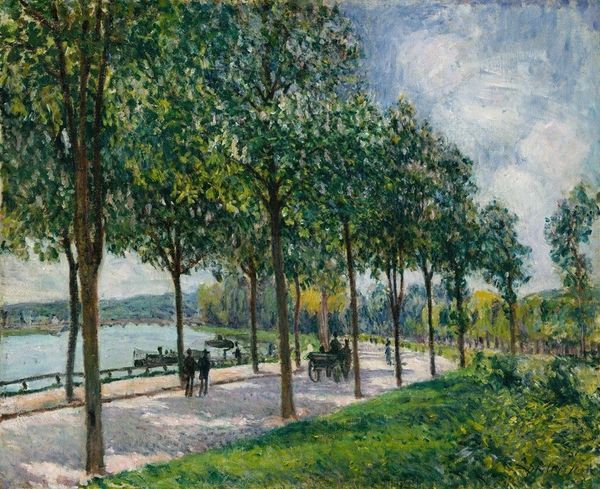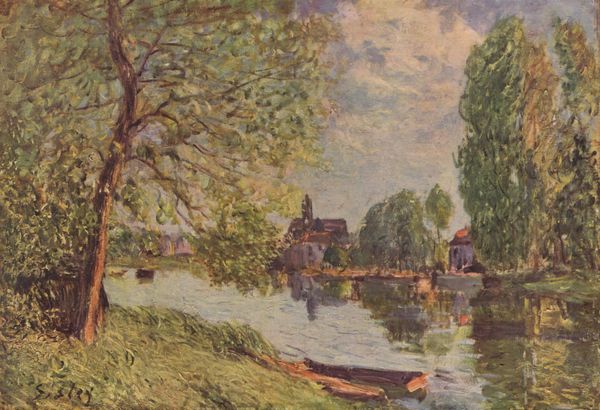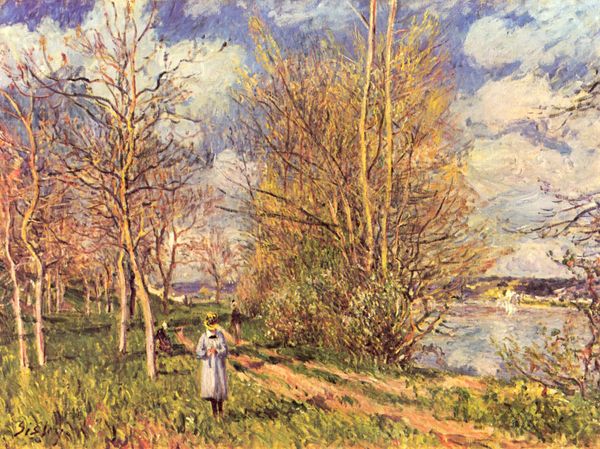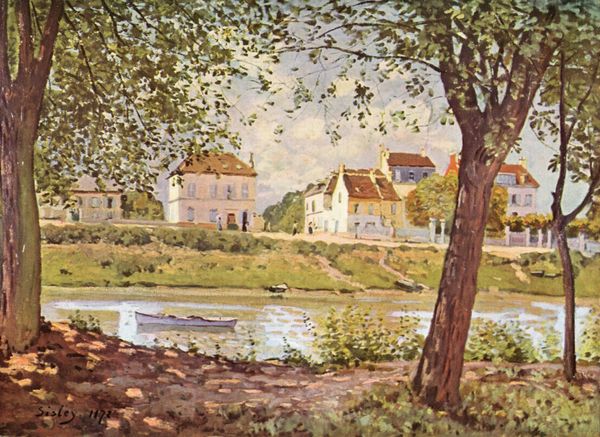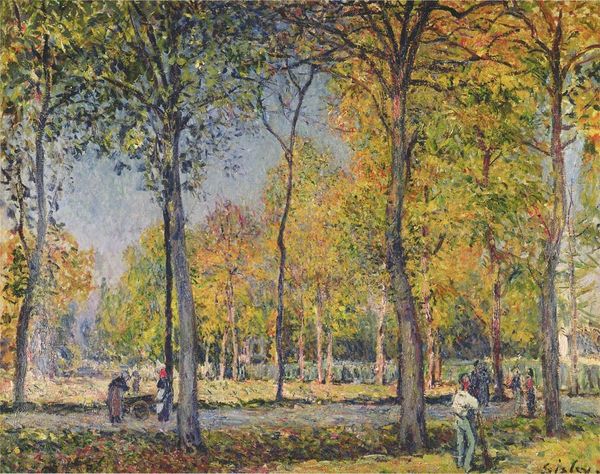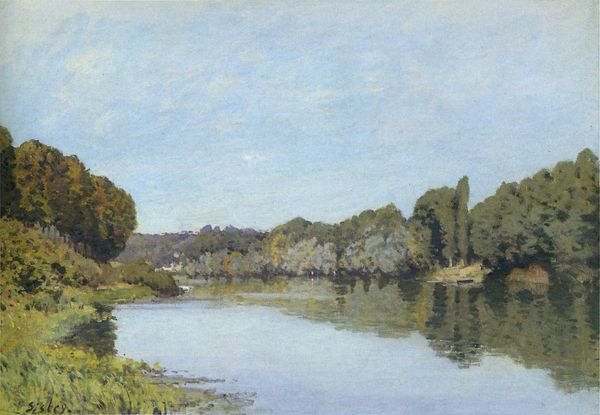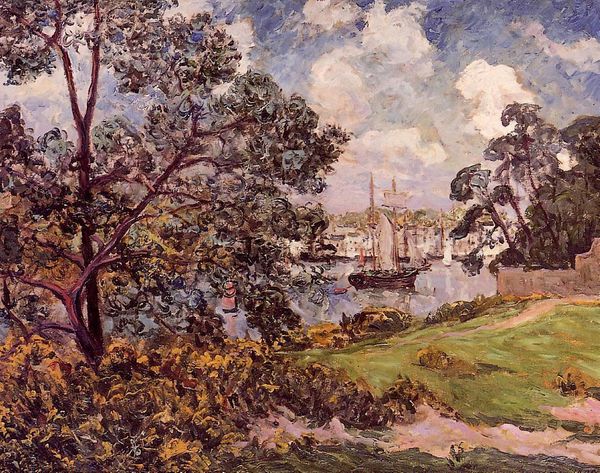
Dimensions: 45 x 61 cm
Copyright: Public domain
Alfred Sisley created "The Seine at Bougival", an oil on canvas, sometime in the late 19th century. The painting strikes us with its harmonious composition, structured by a row of trees that lead the eye along the Seine. Sisley uses short brushstrokes to capture the light filtering through the foliage and reflecting on the water, creating a sense of movement and atmosphere. The cool blues and greens of the river and grass contrast with the warmer yellows and browns of the trees and buildings in the background. Sisley's focus on the transient effects of light and atmosphere reflects the broader Impressionist interest in capturing fleeting moments in time. But we can also consider the structural elements at play; the way the trees act as vertical markers that divide the space, creating a rhythmic pattern across the canvas. This approach challenges traditional notions of depth and perspective, inviting us to engage with the painting as a constructed surface, rather than a window onto the world. Consider how Sisley's formal choices – the placement of the trees, the use of color, the texture of the brushstrokes – contribute to our understanding of the scene. Each element functions not just aesthetically, but as a signifier within a larger cultural and philosophical discourse about art and representation.
Comments
No comments
Be the first to comment and join the conversation on the ultimate creative platform.
